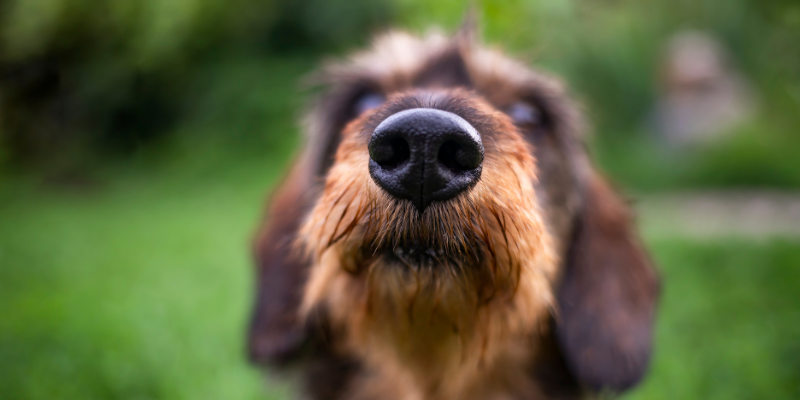Has your dog ever reverse sneezed? While these paroxysmal respiration episodes can look rather alarming if you haven’t seen them before, many dogs will occasionally experience them, and they usually don’t require any treatment. As a result, we’re achoo-sing to answer some common questions about reverse sneezing in pets – what it is, why it happens, and whether it’s anything to worry about in your pet.
What is reverse sneezing?
Reverse sneezing is when a dog suddenly appears to get stuck in a loop of violently sniffing or snorting air inwards through their nose, almost as if they have something caught in there. These episodes usually last a few seconds to a minute, and generally self-resolve.
Why does reverse sneezing happen?
We’re not always sure why reverse sneezing episodes happen, but they do often appear to be triggered by some kind of irritation in the nose or throat.
Narrow-nosed dogs such as greyhounds and whippets seem more prone to these episodes, as do flatter-faced breeds such as pugs and bulldogs who have elongated soft palates (extra tissue in their upper airways and throats). Additionally, irritants in the nose and throat, such as pollen, smoke, grass, or other allergens, can also be triggers.
Should I worry if my pet experiences reverse sneezing?
In most cases, reverse sneezing is nothing to worry about and won’t require any treatment.
However, if your pet’s reverse sneezing episodes are becoming more frequent or severe or are associated with other symptoms (such as nasal discharge, bleeding, coughing or breathing difficulties), then it’s best for us to investigate for any underlying problems in the nose or throat. This may involve:
- Imaging your pet’s head and neck with x-rays or a CT scan
- Scoping (visualising the region with a tiny camera) in your pet’s nasal cavities, sinuses and throat
- Treatment trials for allergies
- Blood tests
So, if you notice any unusual breathing in your pet, consult our breathtakingly helpful veterinary team for advice!

